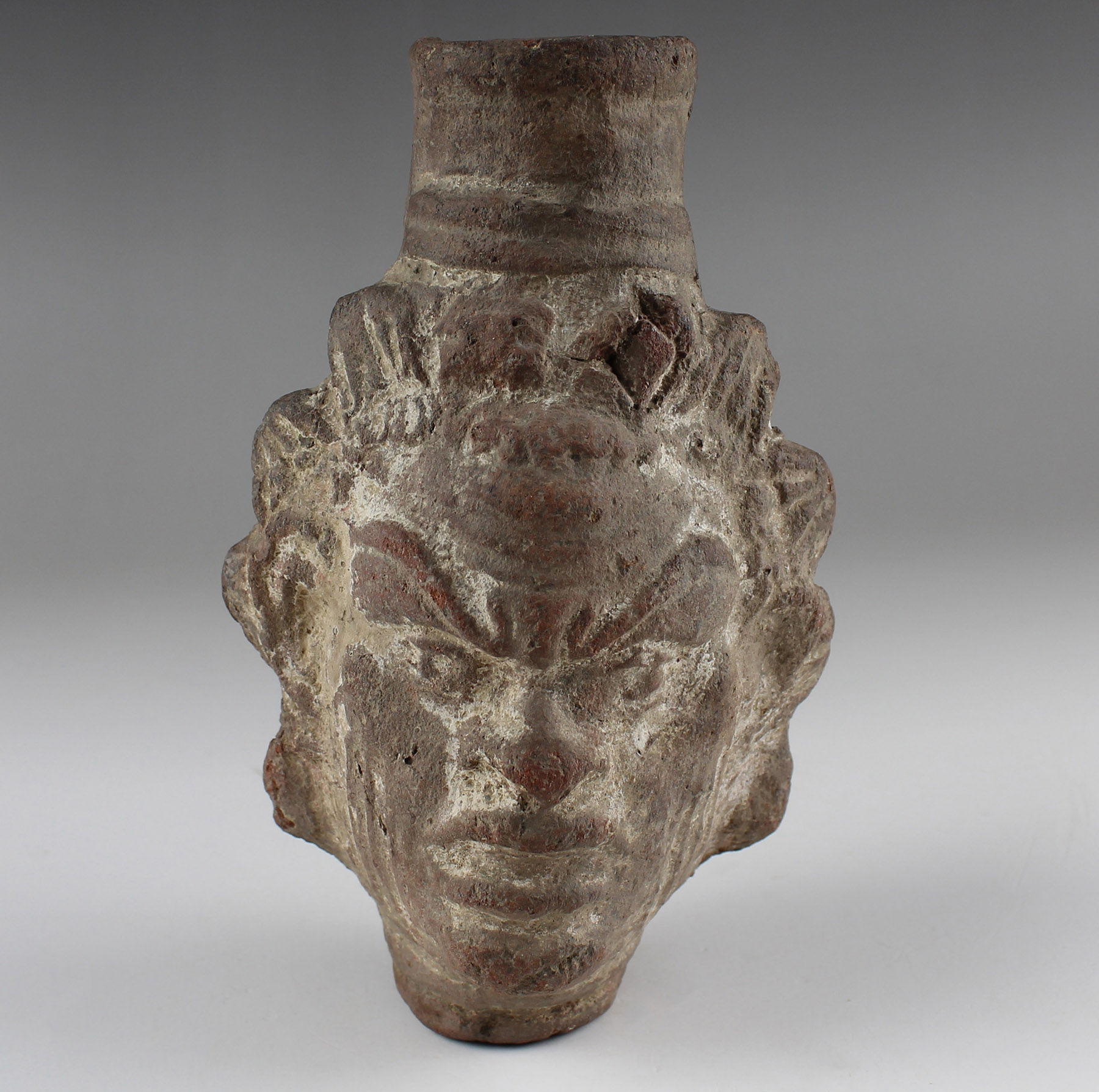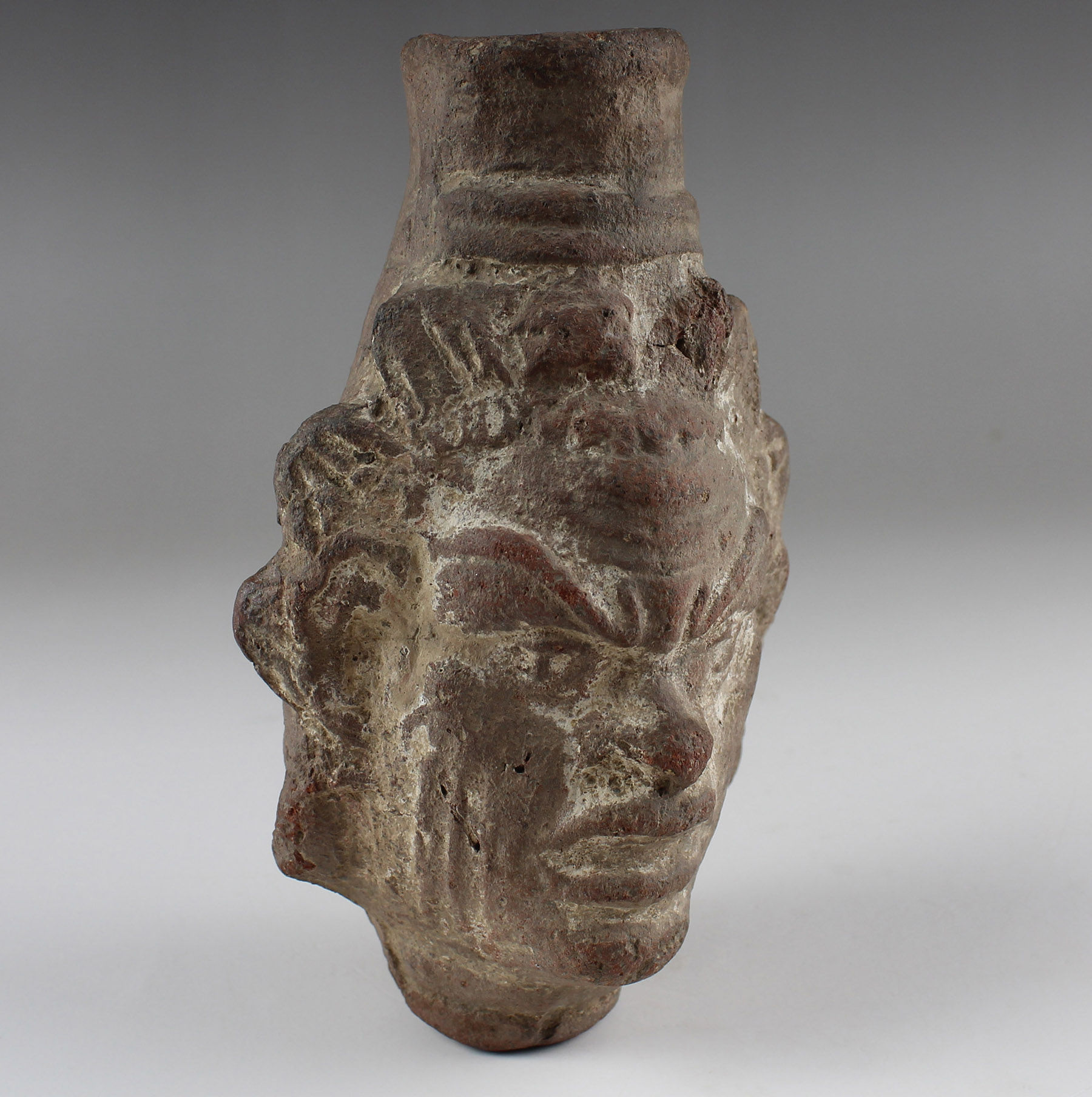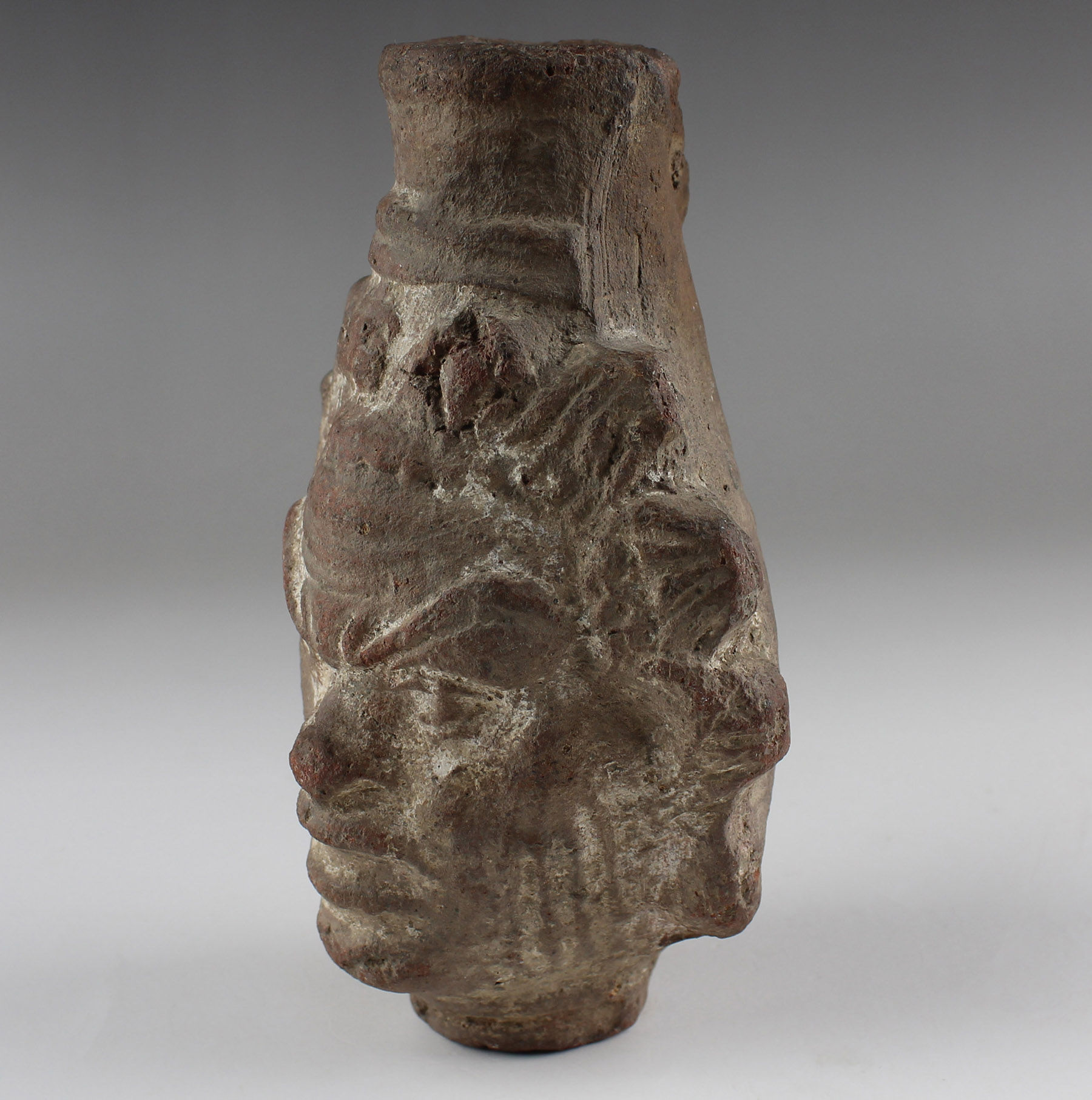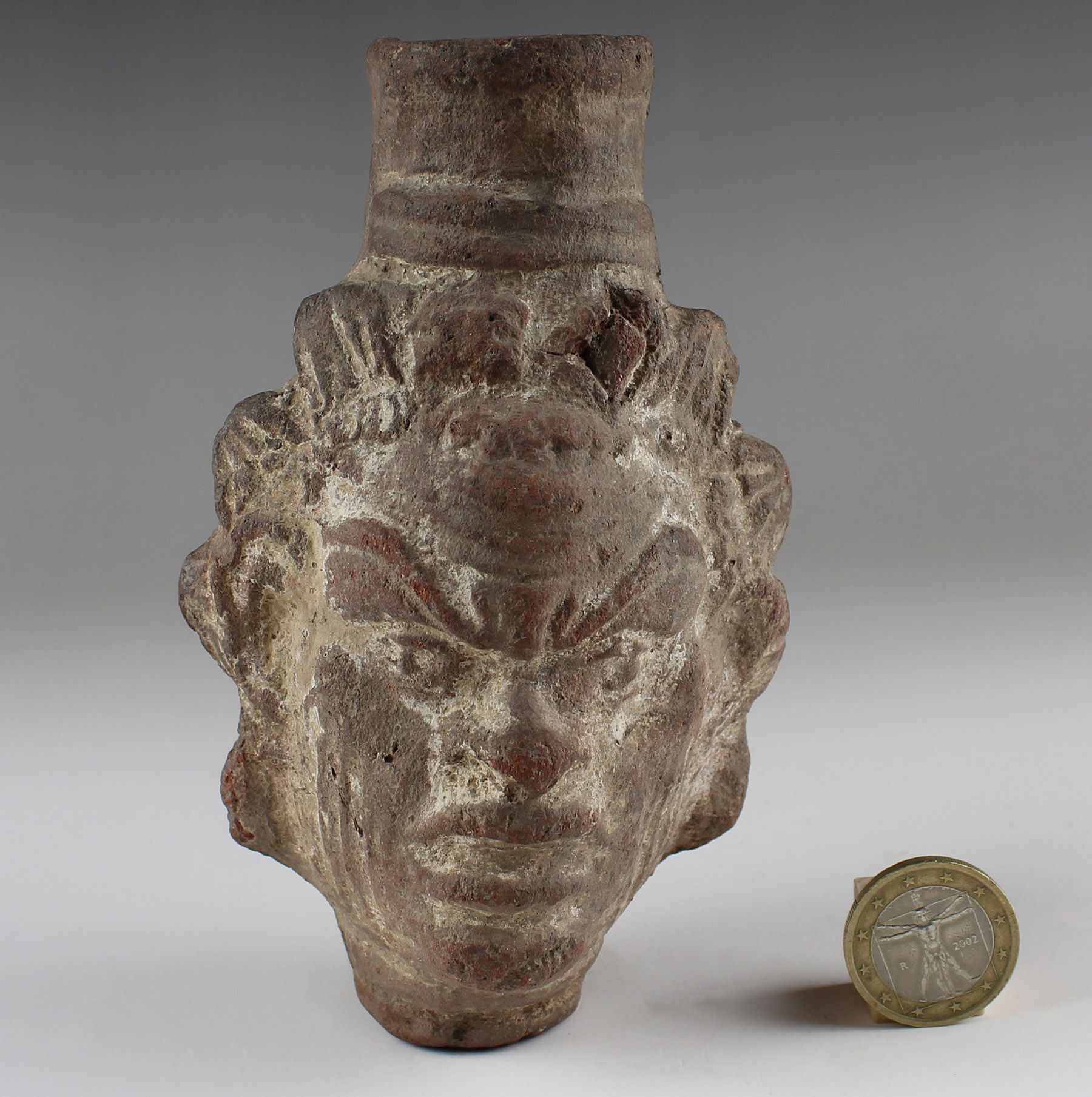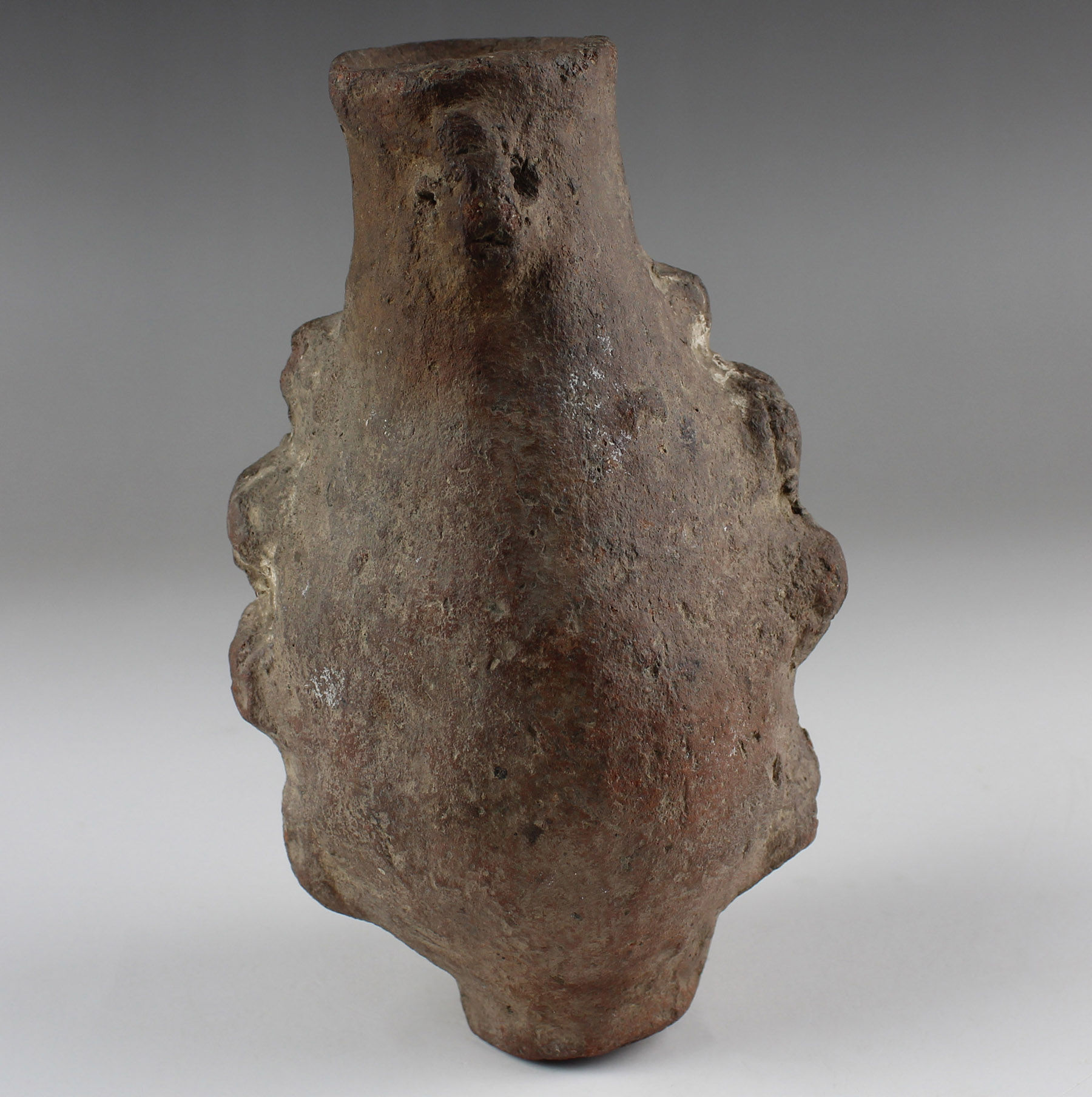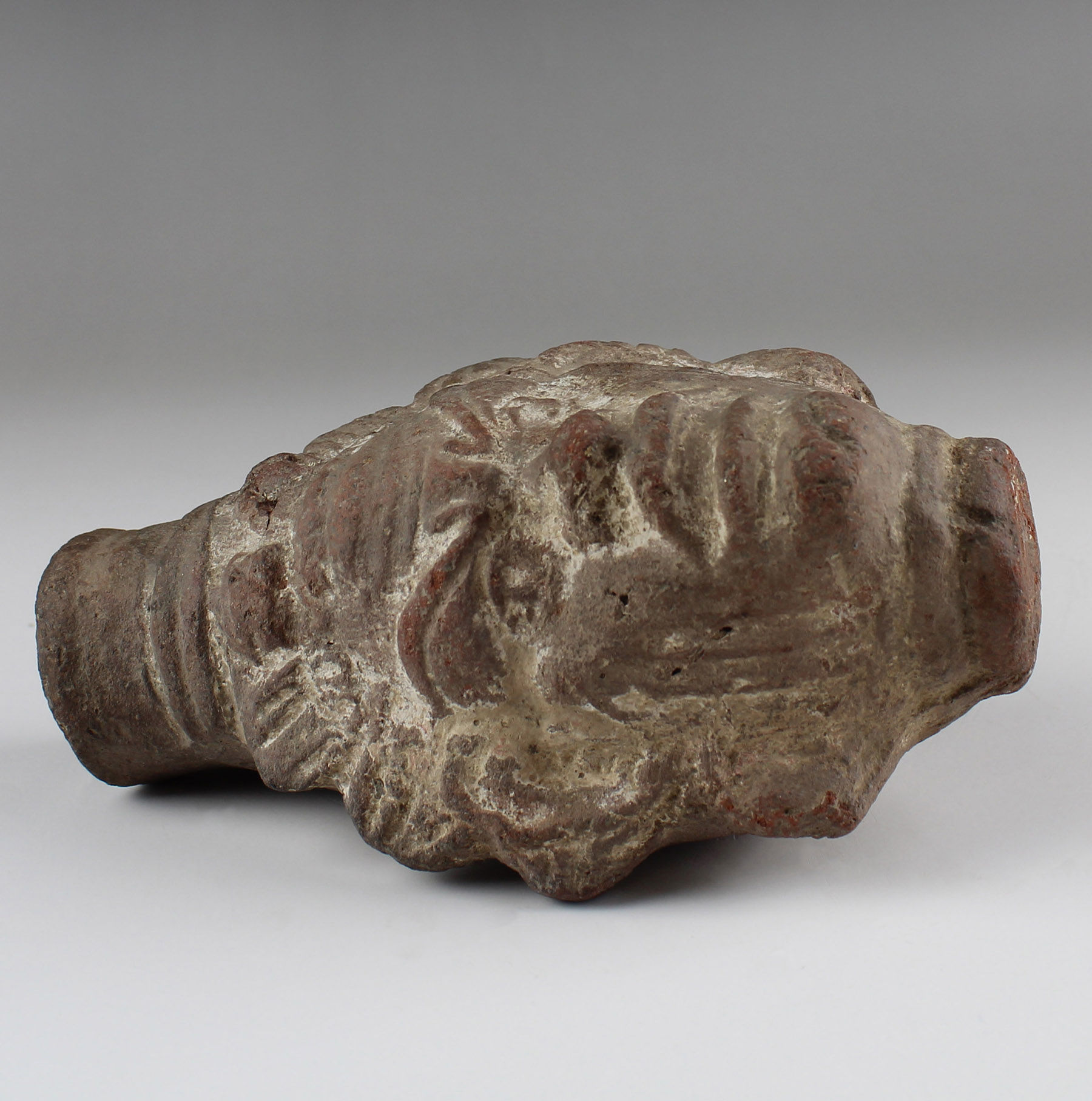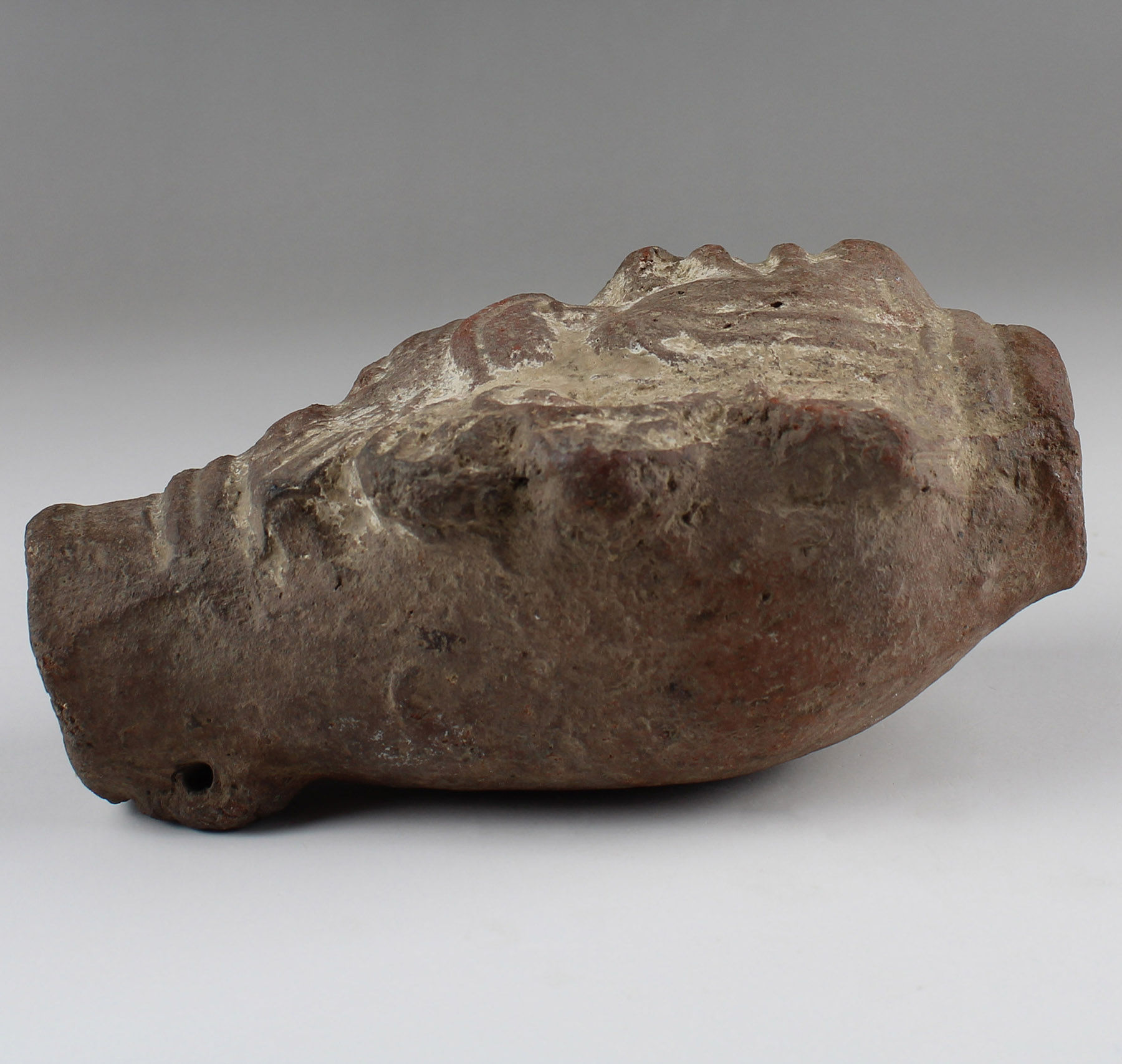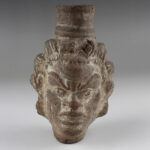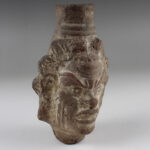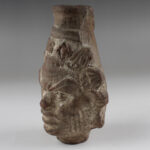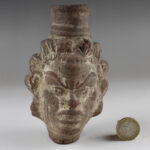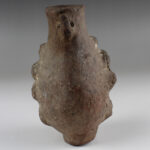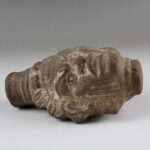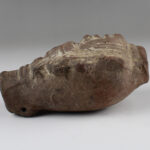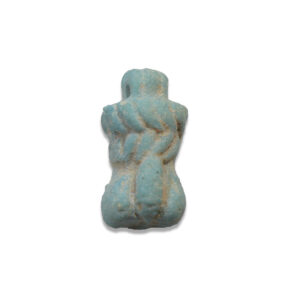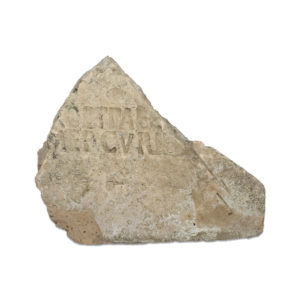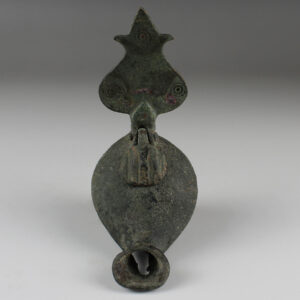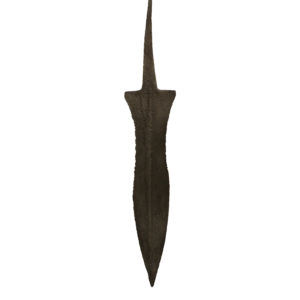Description
| ITEM | Bottle in the shape of a Satyr |
| MATERIAL | Pottery |
| CULTURE | Roman |
| PERIOD | 3rd – 4th Century A.D |
| DIMENSIONS | 130 mm x 75 mm |
| CONDITION | Good condition |
| PROVENANCE | Ex German collection, W.B. (1895 – 1973), Rhineland. In Germany since before 1960. |
Satyr and Silenus, in Greek mythology, creatures of the wild, part man and part beast, who in Classical times were closely associated with the god Dionysus. Their Italian counterparts were the Fauns (see Faunus). Satyrs and Sileni were at first represented as uncouth men, each with a horse’s tail and ears and an erect phallus. In the Hellenistic age they were represented as men having a goat’s legs and tail.
The occurrence of two different names for the creatures has been explained by two rival theories: that Silenus was the Asian Greek and Satyr the mainland name for the same mythical being; or that the Sileni were part horse and the Satyrs part goat. Neither theory, however, fits all the examples in early art and literature.
From the 5th century BC the name Silenus was applied to Dionysus’ foster father, which thus aided the gradual absorption of the Satyrs and Sileni into the Dionysiac cult. In the Great Dionysia festival at Athens three tragedies were followed by a Satyr play (e.g., Euripides’ Cyclops), in which the chorus was dressed to represent Satyrs. Silenus, although bibulous like the Satyrs in the Satyr plays, also appeared in legend as a dispenser of homely wisdom.


